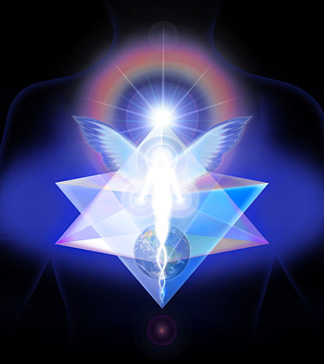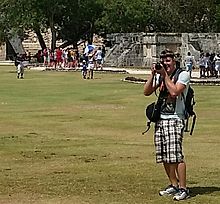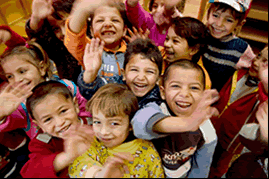 Toward Divine Wisdom
Toward Divine Wisdom
The
wisdom and understanding of our own divine essence is like a beacon
that invites us inward toward ever deeper connection with ourselves and
with all around us. Yet rather than look within, most prefer to look
outward for wisdom, thus sustaining a dependence on a vast hierarchy
that stretches between the individual and the Divine. In all our
wanderings away from the Divine, humankind has obscured its most
compelling features through a persistent belief in limitations arising
out of the controlling mechanisms of this hierarchy.
The
Divine dances outside of the confines of any hierarchical structures.
It is complete within itself, and has a singular purpose of
demonstrating the collective potential of all life within the universe.
It is the archetype of perfection. It is the standard bearer of each
soul's innate design and ultimate destiny. The essence of the Divine is
far beyond mental conception, yet humanity's tendency is to resort to
the limiting language of the hierarchical paradigm to define and
understand it.
The Hierarchical Paradigm: Searching for Connection and Wholeness
When
people are unaware of their inner wisdom and wholeness, they tend to
search for order and security outside themselves. Uncertain of their
place within the hierarchical order of the world, they define
themselves based upon their insecurities. Individuals thus become only
pieces of their wholeness and like shards of glass from a beautiful
vase, they bear little resemblance to their aggregate beauty. Within
the hierarchy, many in high positions of power have taken advantage
of our collective insecurities in attempting to guide the development
of all humankind. They have obscured the direct connection between the
individual and the Divine through a variety of means designed to
intercede between our inner essence and our divine source.
Each individual can come to know themselves to be free of all forms of hierarchical control.
This is not to imply that we should not trust others or join together
in bonds of friendship and community. It is simply a reminder that
relative truth is constantly shifting in the hands of those who desire
to control. And even when the motive for their controlling behaviors may
be of good will, it is still a form of control. When the revealers of
"truth" within the hierarchy withhold and suppress information, they are
usually positioning themselves to maintain or acquire more power
rather than to disseminate empowerment to all.
The
desire for connection and wholeness is a fuel that drives us to seek
out and explore the hierarchical paradigm. This inner longing provides
us with the motivation to seek help and guidance from a specific group
within the hierarchy, and in so doing, cultivate a sense of belonging
and connection. Furthermore, the hierarchical paradigm is a stage
whereby we develop a sense of connection to some grand, encompassing
vision. This is why the hierarchy nurtures prophets who point toward a
greater vision.
Spiritual leaders are able to peer deeply beneath the surface reality
of life and experience how intricately connected every life form is, and
how the composite of all life is intelligent far beyond measure. These
visionary leaders can thus interpret reality through their personal
abilities to perceive and express life's dimensional depth and limitless
intelligence. Yet no one is able to articulate life's full dimensional
depth and breadth with the tools of language. They can only, at best,
describe their interpretation or their impressions.
In
actuality, all of us are able to peer beneath the surface reality of
life and perceive a unique vision of the universe. We require only time
and intention to develop our own interpretations. And this is precisely
what many great spiritual leaders have taught. Life's deeper essence is
not an absolute to be experienced by the chosen few, but an evolving,
dynamic intelligence that wears as many faces as there are life forms.
No group or people has the exclusive portal into the universe by which
the Divine expresses itself in all its majesty. The portal is open and
available to all, because the Divine is within all things.
Those
recognized as great prophets each produced a vision of the universe
beyond what was currently defined by the hierarchy. Because their
interpretations were articulated with authority and depth of insight,
they became a target of debate among various groups in the hierarchy.
This debate then created a polarity of belief. A sympathetic
constituency emerged to defend and embellish their leader's
interpretation, while established groups held it in contempt of
previously held beliefs. Invariably, the leader's vision became
confined and shaped into dogma by followers who desired to create a new
religion or sect. Thus, this infusion of fresh insight quietly receded
into the hands of the hierarchy, where its deeper meaning was obscured
by the very fact that it was incorporated into a rigid structure that
both protected and promoted it.
The Transformation Paradigm: Inner Wisdom and Understanding
A
new paradigm is emerging that promotes a clear connection of individual
consciousness to the compelling features of the Divine without the
intervention of a hierarchy. This is when the fables and myths of
history step into the light and become known as they were originally
intended. This is the time when language will be transformed into a new
form of communication that breaks down all barriers of control. Personal
transformation, through the awakening of inner wisdom and
understanding, is the pathway into wholeness.
The
transformation paradigm is initiated simply by the recognition that
rather than the dependency-inducing ways of the hierarchical paradigm,
there are accelerated, independent pathways that bypass the hierarchy
and lead to self-mastery. These new pathways lead to the divine wisdom
and understanding that is present within all of us. This wisdom can be
accessed through the practice of three principles of transformation:
seeing the Divine in all, nurturance of life, and gratitude. The
application of these life principles disengages individuals from the
controlling elements of the hierarchy, thus initiating the
transformation experience.
As there are relative truths, there are relative freedoms.
As individuals evolve through the hierarchical process, an
ever-increasing sense of freedom is gained, yet external forces
continue to exert control through limiting language, confining belief
systems, and more. These controlling influences lead to
continued reliance upon the hierarchy as it unceasingly attempts to
impose a sense of inequality between us. The underlying equation of the
hierarchical paradigm is: individual + hierarchy = God connection. In
the case of personal transformation it is: individual + inner wisdom and
understanding = divine equality with all.
The Synthesis Paradigm: Integration
The
time has come to integrate the dominant paradigm of the hierarchy with
the liberating transformation paradigm. This integration occurs
naturally once we have fully explored the two paradigms and develop a
synthesis paradigm whereby transformation is attained by searching for
connection and wholeness through our own inner wisdom and understanding.
It is this combination of release from dependency on the
hierarchy and transformation from within that initiates the synthesis
paradigm.
Once
we take responsibility for our own transformation and integration, it
does not mean that the hierarchy is to be shunned or avoided. The
hierarchy is quite benign as a manipulative force and merely represents
one important stage in the journey toward wholeness. What is being set
in motion now is the initial preparation for these paradigm shifts. More
specifically, these paradigms will be simultaneously played out over
the coming years. As always, it will be the choice of each one of us as
to which paradigm we embrace in our journey.
All
of the highest imaginings of humanity are yet unaware of our deepest
foundation. We have sought the upper reaches of the building, yet remain
unaware of the foundation's design. It is here, at the very core of
existence that the Divine is bursting forth with its creative energy
while simultaneously reintegrating with its invitation to wholeness. It
is here that equality is realized, not in the lofty places of relative
truth lodged in the hierarchy, but rather in the deepest part of the
foundational plan of life's original source and ultimate destiny. The
origin and destiny of existence is the tone of equality in life. Listen for this tone – this frequency of vibration – and follow it back into the very foundation from whence all things arise and return.
Consider these words as symbols only. Feel the truth that stands behind these words, and tap into this empowering energy force that reaches out for you.
Know it as a tone or vibration – a resonance that waits for you around
every corner in which your life will turn. It is a beacon of the Divine
gathering itself into the form of language in order to usher you to a
place from which you can experience the formless tone of equality – the
bypass of limitation. It is the primal language of our divine source
that bestows to you the freedom to generate your own deepest beauty in
the expression of your highest truth.




